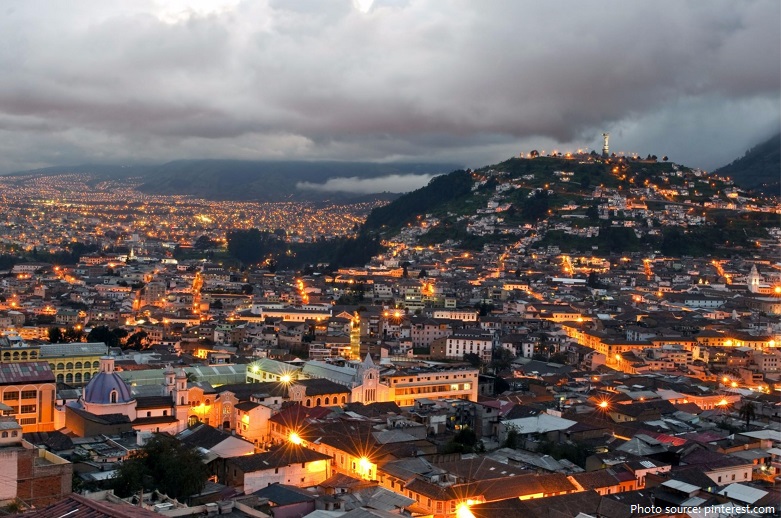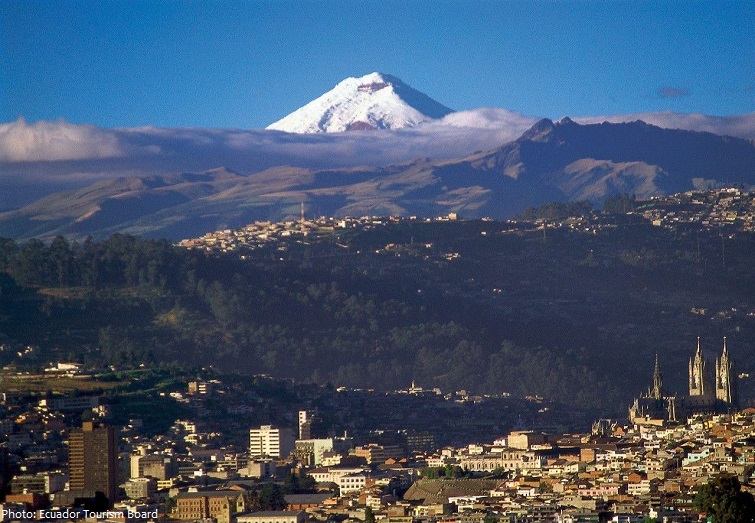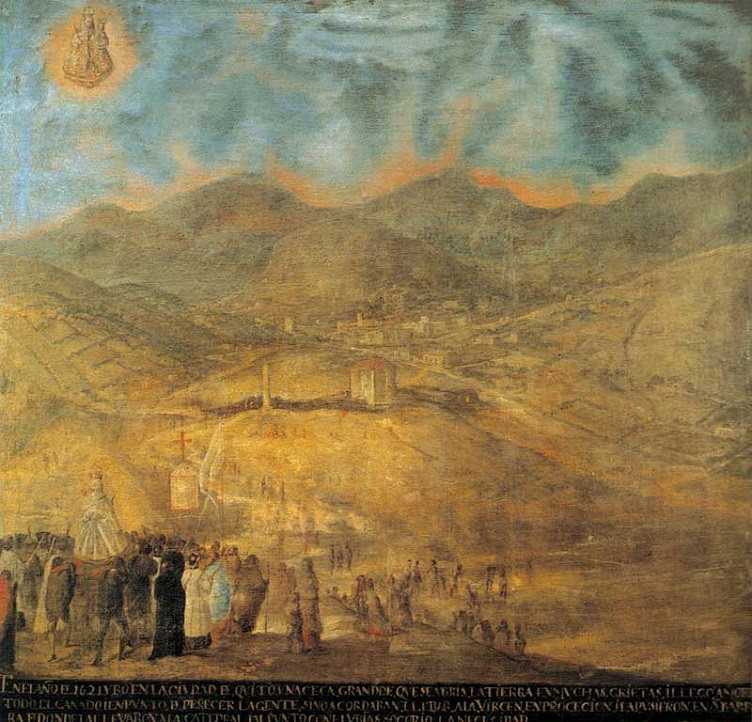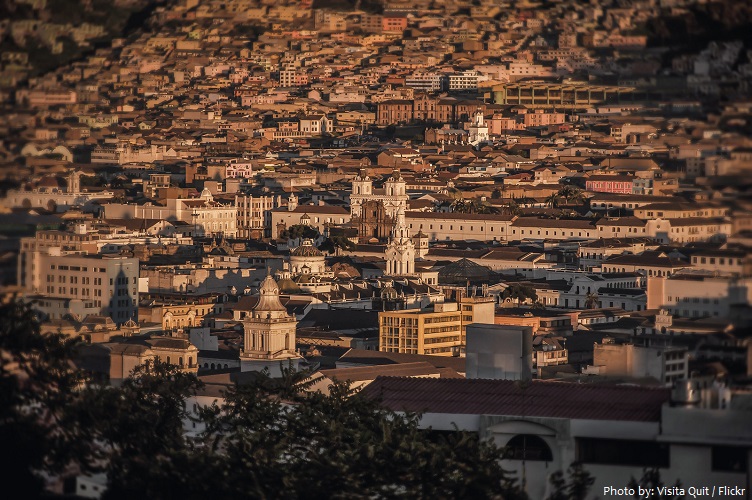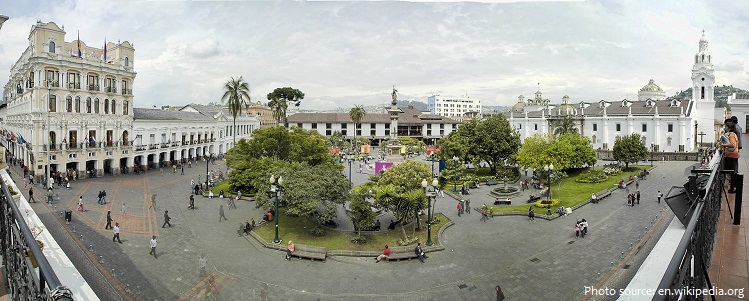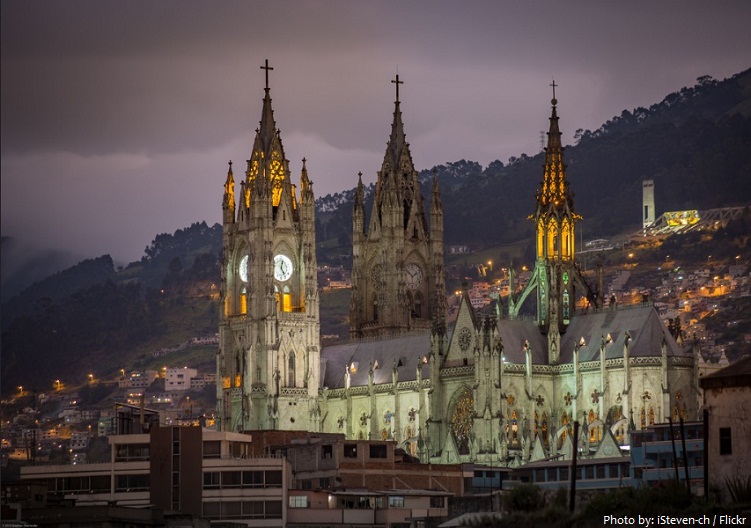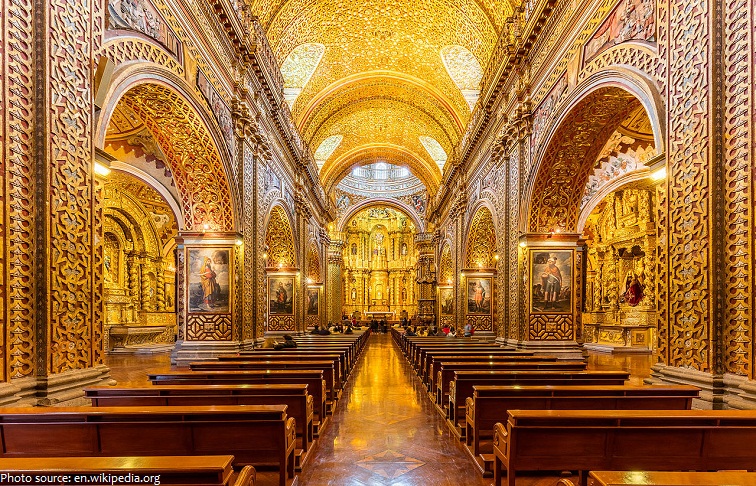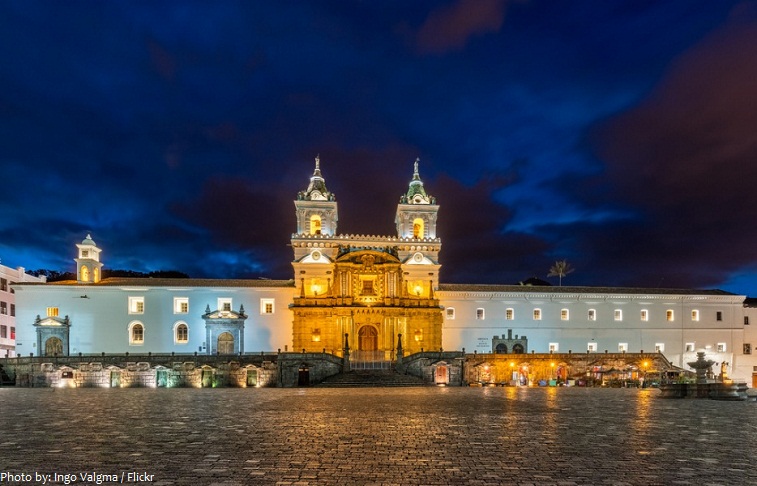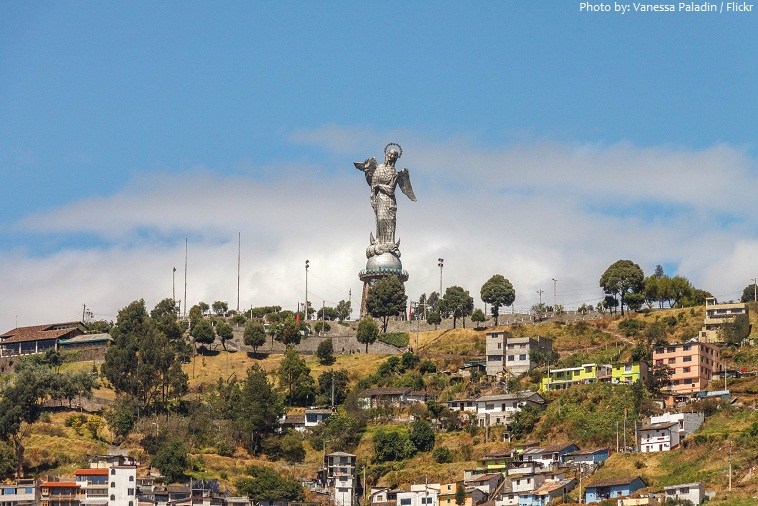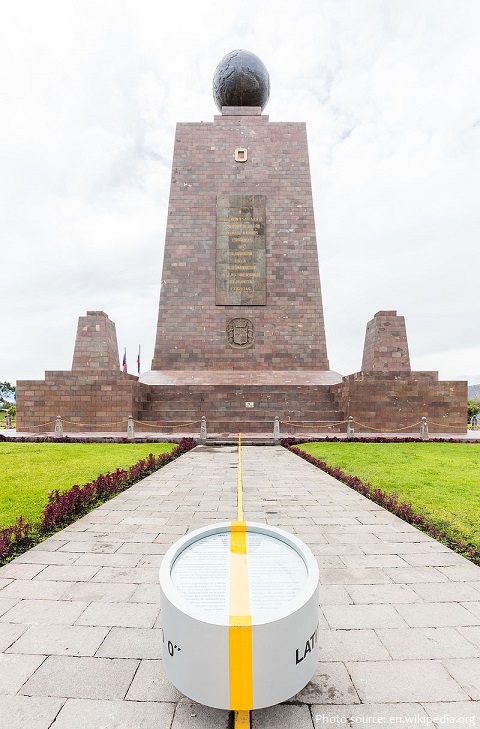Quito is the capital and the largest city of Ecuador.
It is located in the Guayllabamba river basin, on the eastern slopes of Pichincha, an active stratovolcano in the Andes Mountains.
As of August 2019, the population of Quito is about 2 million people.
The city covers a total area of 372 square kilometers (144 square miles).
At an elevation of 2,850 meters (9,350 ft) above sea level, it is the second-highest official capital city in the world, after La Paz.
Quito is the closest capital city to the equator. The central square of Quito is located about 25 kilometers (16 mi) south of the equator; the city itself extends to within about 1 kilometer (0.62 mi) of zero latitude.
Quito’s closest volcano is Pichincha, looming over the western side of the city. Quito is also the only capital in the world to be directly menaced by an active volcano.
The site of the capital city dates from pre-Hispanic times. The early inhabitants of the area were the peaceful Quitu people, who gave their name to the city.
The area was a market center and political frontier before its conquest by the Inca empire, which led to its fortification as an Inca settlement.
The Incas controlled the area from 1450 until early in the sixteenth century.
The present capital was founded on top of the ruins by Spanish lieutenant Sebastián de Benalcázar on December 6, 1534.
Colonists arrived, along with a host of religious orders (Franciscans, Dominicans and Augustinians, among others), and built churches, monasteries and public works, often with the labor of indigenous people.
Quito grew slowly during the 17th and 18th centuries but remained a backwater in comparison to Lima.
Revolutionary fervor swept through the city in the 19th century, and Quito became the capital of the newly formed Republic of Ecuador in 1830.
The oldest of all South American capitals, Quito is notable for its well-preserved old town, which was designated a UNESCO World Heritage site in 1978.
Independence Square is the principal and central public square of Quito, Ecuador. This is the central square of the city and one of the symbols of the executive power of the nation. Its main feature is the monument to the independence heroes of August 10, 1809, date remembered as the First Cry of Independence of the Royal Audience of Quito from spanish monarchy.
The Basilica of the National Vow is a Roman Catholic church located in the historic center of Quito, Ecuador. It is the largest neo-Gothic basilica in the Americas. Work on the basilica began in 1883 and is still unfinished.
The Church of the Society of Jesus known colloquially as la Compañía, is a Jesuit church in Quito. It is among the best-known churches in Quito because of its large central nave, which is profusely decorated with gold leaf, gilded plaster and wood carvings.
The Church and Monastery of St. Francis commonly known as el San Francisco, is a 16th-century Roman Catholic complex in Quito. The imposing structure has the distinction of being the largest architectural ensemble among the historical structures of colonial Latin America.
Topped by a huge statue of La Virgen de Quito (Virgin of Quito; construction lasted from 1955 to 1975), with a crown of stars, angelic wings and a chained dragon atop the world, the hill to the south of Old Town called El Panecillo (the Little Bread Loaf) is a major Quito landmark.
The Ciudad Mitad del Mundo is a tract of land 26 km (16 mi) north of the center of Quito. It contain the Monument to the Equator, which highlights the exact location of the Equator (from which the country takes its name) and commemorates the eighteenth century Franco-Spanish Geodesic Mission which fixed its approximate location.
In 2008, the city was designated as the headquarters of the Union of South American Nations.
Quito and Kraków, Poland, were among the first World Cultural Heritage Sites declared by UNESCO, in 1978.
Because of its elevation, Quito receives some of the greatest solar radiation in the world, sometimes reaching a UV Index of 24 by solar noon.
On February 12, 1949, a realistic broadcast of H. G. Wells’ novel The War of the Worlds led to citywide panic and the deaths of more than twenty people who died in fires set by mobs.

